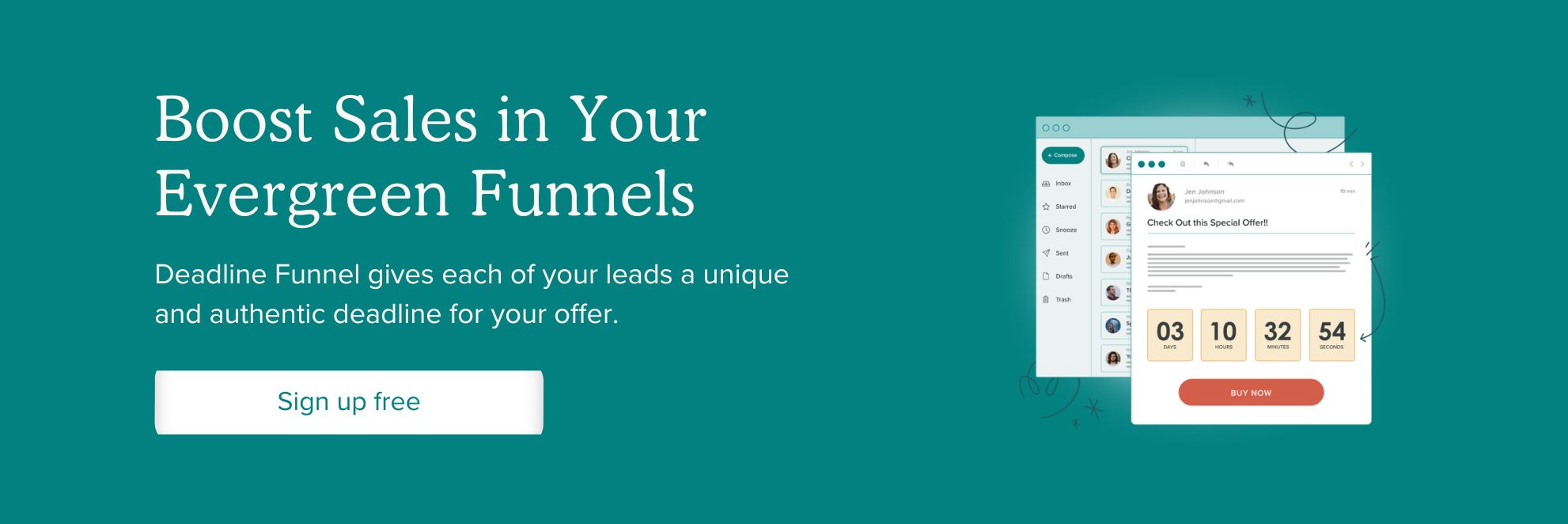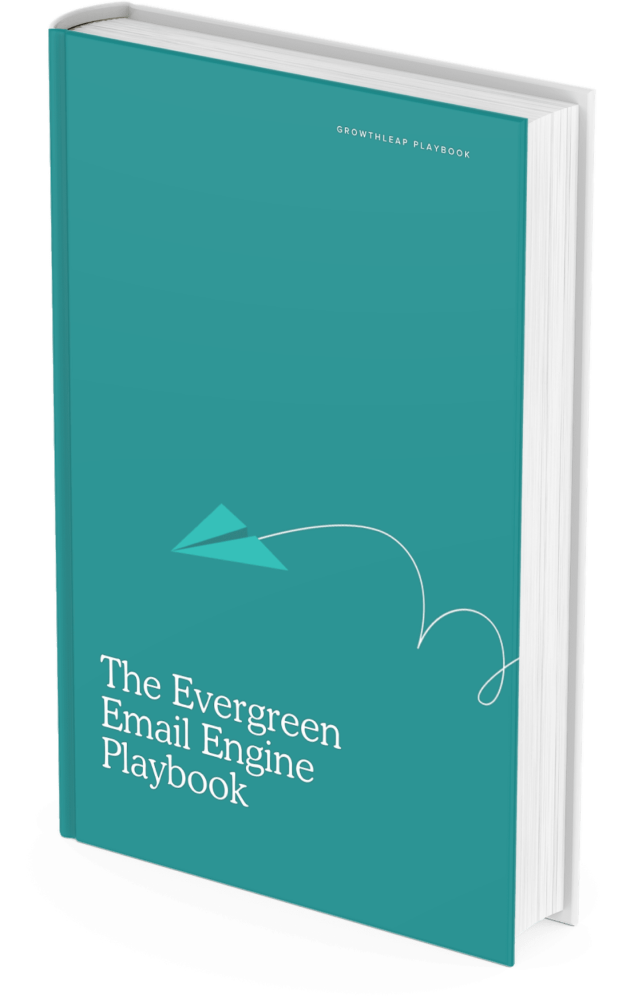
Funnel hacking, a process taught by marketing master and ClickFunnels CEO Russel Brunson, involves examining your competitor’s marketing strategies and then adapting the same tactics to sell your products. It’s one of the best, most efficient ways to get your own business off the ground without putting in all the work in developing your own marketing funnel from the ground up.
With funnel hacking, you can quickly get your online business up and running by strategically investigating and following your competitor’s already successful customer journey flows, and so much more.
This blog post will explore everything you need to know about marketing funnel hacking and how it works. So, if you’re unfamiliar with marketing funnel hacking, don’t worry – we’ll go through everything in detail. To start, let’s explore the definition of funnel hacking.
What is Funnel Hacking?
Funnel hacking is a business tactic used by online small business owners. They practice funnel hacking when they wish to improve the effectiveness of their sales funnels by looking at their competitors’ funnels.
Essentially, funnel hacking is espionage for your sales funnels. First, you analyze what’s working well for your competitors and then copy their best practices in building sales funnels to improve your sales funnels. By doing this, you can make your funnel more appealing and user-friendly. In other words, you can apply your sales model and marketing processes to your competitor’s sales and marketing strategy.
You should never, however, take anything or any content that belongs to another company. You won’t even be using any of their content or logos or wording. Instead, you will simply be entering each level of their funnel and putting it into practice on yours.
Guide to funnel hacking
Step 1: Identify your goal and target market
Before you start poking around in your competitor’s funnel, get clear on your own goals. What are you trying to achieve? More leads? Higher conversion rates? Better customer retention? Knowing the endgame helps you reverse-engineer a funnel that actually supports it.
Once you’ve got your goal, get to know your target audience inside and out. Go beyond the basics and figure out what they care about, how they spend their time, what problems they’re trying to solve. Build out a full customer profile with details like:
- Age range and income
- Occupation and interests
- Lifestyle and values
- Buying habits and online behavior
Let’s say you’re selling productivity tools for remote teams. Your target audience might be small business owners and team leads aged 30–45 who care about team efficiency, use Slack daily, and are overwhelmed by context switching. Knowing this helps you spot which competitor funnels are most relevant to analyze and which ones to ignore.
Step 2: Draw a list of your funnel hacking competition
Once you’ve got your goals in place, it’s time to figure out who you’re going to spy on.
Start by listing your top competitors – the ones who seem to be everywhere and are probably making more money than you. These are the folks whose funnels you want to study. Check out their ads, social media, websites, and landing pages to see what they’re pushing the hardest.
Split your list into two categories:
Direct competitors: These are businesses selling the same type of product or service to the same audience. Think: Apple vs. Microsoft, or Coke vs. Pepsi.
Indirect competitors: These brands might not sell the exact same thing, but they solve a similar problem. For example, a gym offering group classes vs. a personal trainer; they’re both helping people get fit, just in different ways.
Both types are valuable. Direct competitors show you what’s working in your niche, and indirect ones can give you fresh ideas from adjacent industries. Either way, if they’re doing well, there’s probably something in their funnel worth learning from.
Step 3: Buy their products
The core of your funnel hacking is browsing through and buying their products. Then, open your wallet and place your funds wherever your study is if you want to understand the secrets of high-performing funnels.
The first step is connecting to the platform’s order page for an online product. Next, purchase every version of their cross-sells, upsells, downsells, and anything else you can get your hands on after watching their video sales letter and reading all their sales funnel emails.
Step 4. Track everything they do (yes, everything)
Once you’ve found your top competitors, it’s time to go full digital detective. Start by visiting their websites, clicking their ads, signing up for their newsletters—basically, follow the entire customer journey.
Take screenshots of everything:
- Landing pages
- Checkout pages
- Upsells/downsells
- Retargeting ads
Even better, record a screen video while going through their funnel so you can refer back to it later. Also, don’t forget to save all the URLs – they might change, disappear, or become useful later.
Step 5: Figure out where their traffic is coming from
The best funnels don’t just convert, they also attract the right people in the first place. To funnel hack properly, you’ll need to figure out how your competitors are getting their traffic.
Are they running Facebook ads? Killing it on Google? Using influencer shoutouts?
Here are some tools that help:
- SimilarWeb: Gives you a snapshot of where your competitor’s traffic is coming from, including organic search, paid ads, referrals, and more.
- Facebook Ad Library: See all the current ads your competitors are running across Meta platforms. Great for inspiration and spotting what’s performing well.
- SpyFu: Lets you peek at your competitor’s keywords and paid ad strategies on Google.
- PowerAdSpy: Tracks Facebook ads across multiple countries, showing engagement stats and how long each ad has been running.
If you see retargeting ads (like “wait! don’t go!” offers), grab screenshots of both the ad and the landing page it leads to. These retargeting funnels are often gold mines for clever copy, bonus offers, or layout ideas.
Step 6: Study their back-end email sequences
Once you’re inside your competitor’s funnel (because, yes, you should opt in), start paying attention to what happens next. What kinds of emails do they send? How often? Are they offering discounts, tips, or upsells?
This is where a lot of the real funnel magic happens—behind the scenes. Screenshot or save the best ones and look for patterns. What subject lines do they use? Do they have a welcome sequence? A re-engagement sequence? A “we miss you” discount? These are all clues you can use to build your own email flow that converts.
Step 7: Build your own funnel
Now that you’ve done all the homework, it’s time to build your own version – but with your own spin.
- Use your favourite funnel builder to create pages that mirror the flow and structure of what worked in your competitor’s funnel, but keep your copy original.
- Create your email sequences based on what you’ve seen, but tailored to your brand voice and offer.
- Launch your ads on the platforms that seem to work best in your niche. This is your chance to test and optimize.
- And most importantly: don’t just copy. Improve. The best funnel hackers know how to blend inspiration with innovation.
Just remember that funnel hacking doesn’t guarantee instant success. But, it saves you tons of trial and error, and gets you in the game faster with a smarter strategy.
Sales and marketing process
Your approach to reaching, interacting with, and converting target prospects into successful customers is your sales and marketing process. The term “sales and marketing process” covers everything from initial early contact to sales funnels and final purchase processes.
What is a Sales Funnel?
A sales funnel is a marketing tactic depicting a consumer’s purchasing path. Because many potential clients may start at the top of the sales process, the model uses a funnel as an example.
However, only a small percentage of these individuals buy something.
Customers display a deeper commitment to the purchase goal with each level of the funnel they complete. This funnel concept is commonly used by most companies, both online and offline, to direct their B2C marketing initiatives at each stage of the sales funnel.
The four fundamental phases of the sales funnel are:
- Action
- Awareness
- Interest
- Desire
Marketing Funnel
A marketing funnel outlines the interaction between you and your customers. Marketing funnels show the paths to conversion from the first moments someone hears about your company through the point of purchase and beyond.
A marketing funnel can help you determine what your own business has to do to influence customers at various stages. By analyzing your funnels, you can increase sales, patronage, and brand recognition. But, of course, the best method for generating dependable sales is to build profitable funnels.
Marketing Funnel Vs. Sales Funnel
In reality, marketing and sales operations go through the same funnel, with marketing personnel working at the top and sales representatives at the bottom. Let’s examine the interaction between the marketing and sales funnels in traditional business-to-business (B2B) organizations with an outbound sales force:
First, using advertising and marketing strategies like search engine optimization (SEO) and pay-per-click (PPC) advertising, the marketing team will draw in potential customers (PC). The marketing department will provide a valuable incentive for contact information to encourage prospects to become leads.
An ebook, report, sample, or digital tool that is offered for free is referred to as a “lead magnet.” The marketing team has now generated “marketing qualified leads,” or MQLs, and verified a person’s interest.
The marketing team will transfer control to the sales team by giving them MQLs. The sales team tries to qualify the lead for fit and validate the MQL’s interest. The sales team has created a “sales qualified lead,” or SQL if there is a suitable fit.
The sales team will then convert SQLs into customers after that. The illustration shows how marketing and sales cooperate to send prospects through the funnel.
Benefits of Funnel Hacking
One of the most important and valuable talents in marketing is funnel hacking. Your competitors have conducted several split analyses. Additionally, they have recognized and enhanced their models. You can use their split-test results. Then, apply it to your existing funnel as well.
- This helps you save a lot of time when conducting split tests.
- You can better grasp your specialty by researching your competitors.
- You can increase your earnings more quickly.
- You can learn more about their tactics by researching your rivals.
- With optimization, you make significant financial savings. Since you are aware of the effective and ineffective methods. You can spend money on something other than ineffective parts of your business.
Drawbacks of Funnel Hacking
Funnel hacking can save you time and give you inspiration, but it’s not a guaranteed blueprint for success. In fact, plenty of marketers and founders have found that trying to copy a competitor’s funnel doesn’t always work. These are a few reasons why:
1. What works for them might not work for you
Your competitors have different products, audiences, pricing models, and brand positioning. What converts for them might totally flop for you, especially if you don’t understand the context behind why their funnel works.
A sales funnel is more than just page design; it’s built on research, voice, and strategy.
2. You can’t see the whole funnel from the outside
You only get a surface-level view when you funnel hack. You might miss vital elements like:
- Targeted ad segmentation
- Retargeting rules
- Email copy split tests
- Backend automation and offer logic
So, while it might look like a funnel is working, you could be misreading the signals.
3. Copying can make your brand feel generic
If you mimic another business too closely, your funnel may come across as uninspired or off-brand. Worse, it can confuse or alienate your audience, especially if the tone or flow doesn’t match your product or service. Originality still matters.
4. It can encourage shortcuts over understanding
Funnel hacking is a great research tool, but it shouldn’t replace thinking deeply about your own customers and offer. If you don’t know your value proposition or what problem you solve, copying someone else’s funnel won’t fix that.
5. It’s easy to overlook your customer journey
A funnel that looks sleek doesn’t always solve the right problems for your customer. Focusing too much on what competitors are doing can distract you from building something that’s genuinely useful, efficient, and aligned with your customer’s needs.
Examples of funnel hacking
Funnel hacking is something real businesses are doing every day to get better results. Here are a few examples of how companies have used funnel hacking strategies to grow, improve conversions, and optimize their processes.
1. How Zendesk maps the full journey
Zendesk is known for having a really polished sales funnel. If you look at how they guide people from just hearing about the brand to becoming customers, it’s clear they’ve fine-tuned every stage:
- They drive traffic using PPC ads, SEO content, and social posts.
- They build trust and curiosity with tailored demos and case studies.
- And when someone’s ready, they offer low-friction CTAs like free trials or limited-time offers to seal the deal.
If you’re funnel hacking a brand like Zendesk, you’d sign up for those free trials, watch how their emails are written, check out their retargeting ads, and study how they move people from “just looking” to “ready to pay.”
2. Kansas City Steak Company doubled sales by reworking their funnel
One online steak company realized their funnel wasn’t converting as well as it could. So, they went full funnel hacker mode:
- They looked at competitors with better sales, broke down what those brands were doing differently, and ran tests.
- They improved their landing and offer pages to make them clearer and more persuasive.
- They added upsells at checkout, increasing average order value and lifetime customer value.
The result? A 2x boost in total sales. All from reverse-engineering what already worked in their space.
3. The “shadow traffic” fix
Here’s another example from marketers Mike Schmidt and AJ Rivera. They noticed that a lot of people were visiting their funnel pages… but not buying. Not even clicking.
So instead of scrapping everything, they built what they called a “funnel hub”, a single place with reviews, case studies, answers to common objections, and more context for hesitant buyers.
They were essentially serving their “shadow traffic”: the people who wanted more info before making a decision.
That tweak alone helped recover leads they would’ve otherwise lost.
Want similar results? Funnel hacking can help you spot these kinds of gaps and opportunities without starting from scratch.
What is ClickFunnels?
ClickFunnels is a marketing and advertising funnel software that assists companies in increasing conversion rates. It’s a full-service online sales and marketing solution that covers everything you need to manage your business from beginning to end.
You can construct beautiful, high-converting sales funnels using ClickFunnels to help close more deals and generate more cash.
Furthermore, ClickFunnels has many strong features that allow you to easily create your sales funnels, measure your progress, and improve your results. So it’s no surprise that ClickFunnels is among the most important promotional tools.
ClickFunnels also integrates with DeadlineFunnel for ease of use.
Funnel hacking tools
You must direct visitors to a page and convert that traffic if you want to construct successful funnels. For example, a procedure for turning that traffic into customers can be built using the “customer journey,” yet the journey only requires a small number of pages. However, the following are some of the resources your competitors are using to attract and convert more visitors:
Ghostery
Ghostery is one of the best Chrome extensions for this purpose. With the aid of Ghostery, you can learn more about the different pixels and trackers used on websites. For instance, you can determine whether or not a website is using Facebook pixels to determine whether or not it is running Facebook advertising.
Of course, the program allows users to remain “hidden” from these trackers and pixels, but it’s also useful for discovering which trackers are used on the website.
SEMrush
Marketers can learn more about rivals by using the SEO tool SEMrush. For example, you may use the tool to look into information such as how much organic traffic your rivals receive and the search terms they are ranked for. SEMrush also estimates their backlink sources, paid advertising budgets, and other factors.
BuiltWith technology profiler
This is another Chrome add-on that enables you to see the technologies used to create the website you’re visiting. It is a “site profiler” application that details every technology it discovers on a specific web page, including programming languages, advertising pixels, statistics, and more.
Thus, for example, you can check if a website uses WordPress, Google Analytics, AdSense, and other monetization methods.
Things You Must Know For A Successful Funnel Hacking Experience
The demographic
Knowing who uses your competitor’s product allows you to target the same market. These are things like:
- Gender
- Political affiliations
- Interests
- Age
- Their income level
- Race
- Where they live
- And a lot more
This may help you gain new perspectives on your audience and uncover individuals you had no idea were part of your target market.
The Offer
You must find the deal made by your rivals because it’s possible that it’s not the initial purchase. To find out what their next offer is, you must purchase it. When you accept their next offer, what are you given? What is provided if you reject their next offer?
If you want to funnel hack several rivals, this might get pricey. If you have a tight budget, try to funnel-hack your primary rival. You’re curious to know things such as:
- What they offer for sale
- The cost
- Their front page
- How it is sold
- How’s their follow-up email like?
- What is their “we miss you” offer?
- What promos follow your first purchase?
Their Landing Page
When someone clicks on advertising, they go to a landing page. This is the most crucial page because it has been established that your competition is paying to drive traffic to it.
They have probably also invested a significant amount of money testing the products that are most successful on the market. You need to know if this is a sales or lead page. What do they provide, and how do they hope to keep you in the funnel?
The Traffic Source
There is traffic, so you need to figure out how they get people to visit their site so you can copy what they’re doing. Does the company advertise? Where do they run their ads? Use the single ads? Natural traffic? Advertisements on Google? Running Facebook ads?
The Ad Copy
What is the actual sales pitch that is drawing customers in? What are their color choices and image styles? How long is their call to action?
Conclusion: How Funnel Hacking May Improve Your Business
Funnel hacking is one of the most powerful steps businesses can take to grow. By observing what other prosperous businesses are doing, you can discover fresh marketing techniques to aid in the growth of your own company.
Utilize the information, tools, and strategies we’ve given you to hack into your rivals. Noting that feeling overwhelmed at first is normal, you will progress in your hacking skills and even create high-converting funnels. In addition, our guidelines will help provide you with extra information to help you develop your unique brand and launch it quickly.
FAQs
Is funnel hacking legal?
Funnel hacking is undoubtedly legal. The funnel hacking process looks at rivals to determine what works and doesn’t, then models and tests it in your company. While different regulations in each nation forbid some applications, creating a “funnel” to generate leads for marketing reasons has typically been seen as legal. Furthermore, there is no way funnels may be unethical or even unexpected by recipients if landing sites and lead collection forms are used properly and ethically.
Do you need help with your funnel-hacking efforts?
Funnel hacking is a fantastic approach to boost conversions, raise your income, and reduce waste. Funnel hacking is a procedure that modifies current sales funnels to boost earnings. Additionally, funnel hacking manipulates website visitors’ psychology to increase conversion rates. Therefore, utilizing features like exit intent, which activates when a user tries to leave your website, is important.





